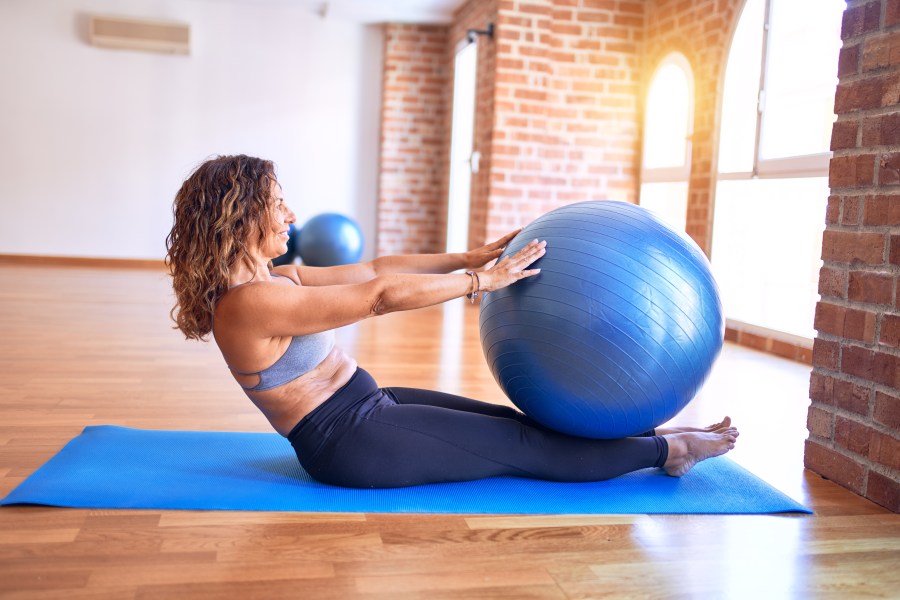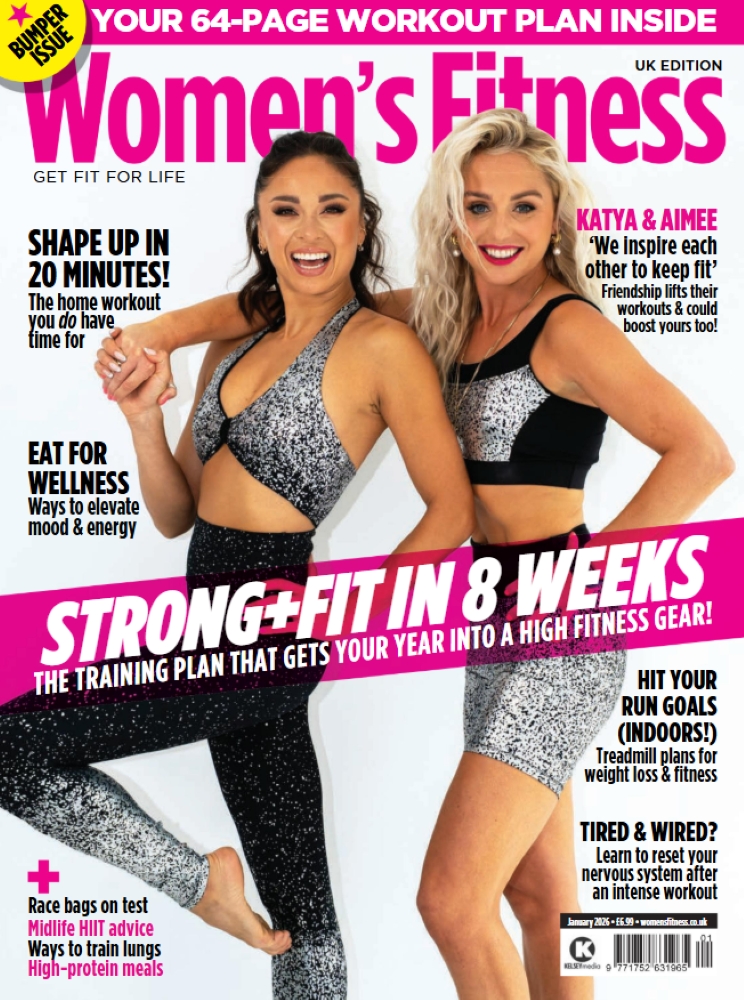From preventing injuries to providing rock-solid steadiness in workouts and everyday life, there are plenty of reasons to build a stronger core. This core workout targets those deep stabilising muscles.
In previous decades, our attitude to exercise was simple: burn calories with cardio, strengthen limbs with weights, then stretch – and repeat. However, in recent years, it’s come to light that the core plays a huge role in stabilising the body and preventing injuries, whether you’re at the gym, on a run or even carrying the groceries. As a result, many fitness fans are trading in their regular workouts for dedicated core training.
Target your stabilisers
When it comes to locating the core, most minds immediately jump to the midsection of the tummy and back – essentially, the area that would be covered if you were wearing a corset. However, to be more specific, the core is located in your lumbar spine and pelvis, incorporating your deep spinal, abdominal and pelvic muscles. This includes the transversus abdominis (running from your sides to your front), multifidus (positioned deep in the spine), obliques (the sides of the stomach), gluteus medius and minimus (in the bottom), the pelvic floor and diaphragm.
Perhaps one of the biggest misconceptions about the core is that it’s synonymous with the abs. The six-pack muscles, or rectus abdominis, are the superficial tummy muscles you might be able to feel or see, as well as being the prime movers of your trunk. On the other hand, your core muscles run much deeper within the body and are responsible for overall stability.
Build a strong foundation
Looking for more oomph? Whether you’re lifting, striding, or anything in between, a strong core provides a robust base from which you can maximise your force generation and move with greater efficiency, economy and power. With the support of these deep stabilising muscles, you’ll also minimise load on your joints in the lower spine, shoulders and knees, while improving back and pelvic stability, and reducing your risk of injury – no matter what your chosen workout or activity.
What’s more, if your core muscles are strong, your superficial movement muscles will be in a better position to do their job, too. On the other hand, a weak core might cause other muscle groups to switch on during exercise, overcompensating for your lack of central stability, which can cause poor movement patterns and lead to injury. For example, if you’re running with a weak core, you might increase stress on your back and knee joints because the stabilising muscles in your bottom and spine cannot provide the support you need.
Crack down on core work
Before jumping into core training itself, it’s important to check what level you are at with your core and pelvic stability. Many people are doing core exercises that are too advanced, managing only because they are activating the wrong muscle groups. Prior to proceeding with a core workout, first take some time to connect with how it feels to activate your core muscles – then, you can bring this into your movements and exercises.
If you have never trained your core before, start by very slightly pulling your belly button towards your spine to gradually get your core muscles working. You can also try sitting upright without leaning against anything, which will activate those deep steadying muscles and help you connect with the right area.
While pulling the belly in will engage these muscles initially, once you are more familiar with core work and you can move with good stability, there is no need to keep ‘switching on’ your core. After all, the role of these muscles is to provide unwavering support whether you’re sitting, standing or moving. When working effectively, they will be activated and doing their job without you even being aware of it.
The core workout
Ready to take things up a notch? The following at-home workout will help you target your core and strengthen your all-important inner stabilisers.
Reps and sets
Beginners: 2 sets of 10 reps
Intermediates: 2 sets of 15 reps
Advanced: 2 sets of 20 reps
Core engage
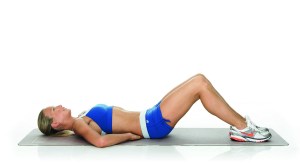
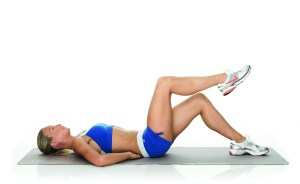
Targets: Core
- Lie on your back with your knees bent and your feet flat.
- Roll your pelvis back and forth until you find a midpoint where your back is neither pushed into the floor nor arched excessively.
- Keeping your shoulders relaxed and drawn down, place your fingertips underneath your lower back, palms down (A).
- Take a breath into your belly, allowing your abdominal wall to expand outwards.
- As you exhale, draw the navel inwards and slowly lift your right foot until your right knee is above your right hip (B).
- Breathe in and slowly lower your foot back to the floor.
- Relax and repeat with your left leg.
Tip: There should be no change in the amount of pressure on your fingertips beneath your back. Try to stay relaxed throughout the exercise and avoid hunching your shoulders.
Upper-body workout to activate your arms
Russian twist
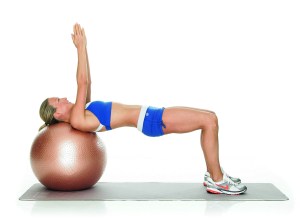

Targets: Core and side muscles
- Lie with your head and shoulders supported on a stability ball. Extend both arms up to the ceiling, keeping your hands together (A).
- Rotate both arms towards the right (B).
- Return to the centre then rotate to the left. Continue alternating sides.
Tip: Pull your belly button into your spine for balance.
Stability ball straight-leg raise
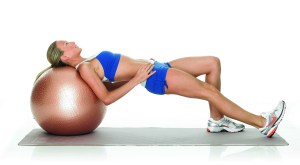
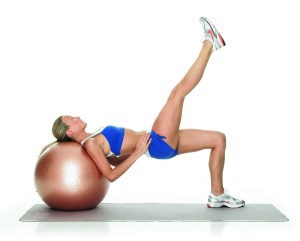
Targets: Core, bottom and back of the thighs
- Lie with your head and shoulders supported on a stability ball. Push your upper arms into the ball for balance.
- Keeping a 90-degree angle in your left knee, straighten your right leg while keeping your left heel on the floor.
- Lift your right leg up towards the ceiling, keeping the leg straight and ankle flexed (B).
- Switch legs and repeat.
Kneeling on stability ball
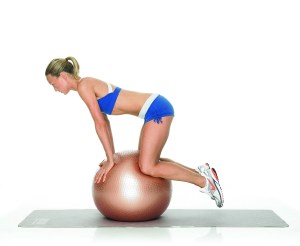
Targets: Core, legs, and arms
- Stand behind the stability ball. Lean forward and place your hands and knees hip-width apart on the ball.
- Roll slowly forward until your feet lift off the floor and you come into an all-fours position.
- Aim to hold this position for 20 seconds, then gently roll your feet back to the floor before preparing to repeat.

